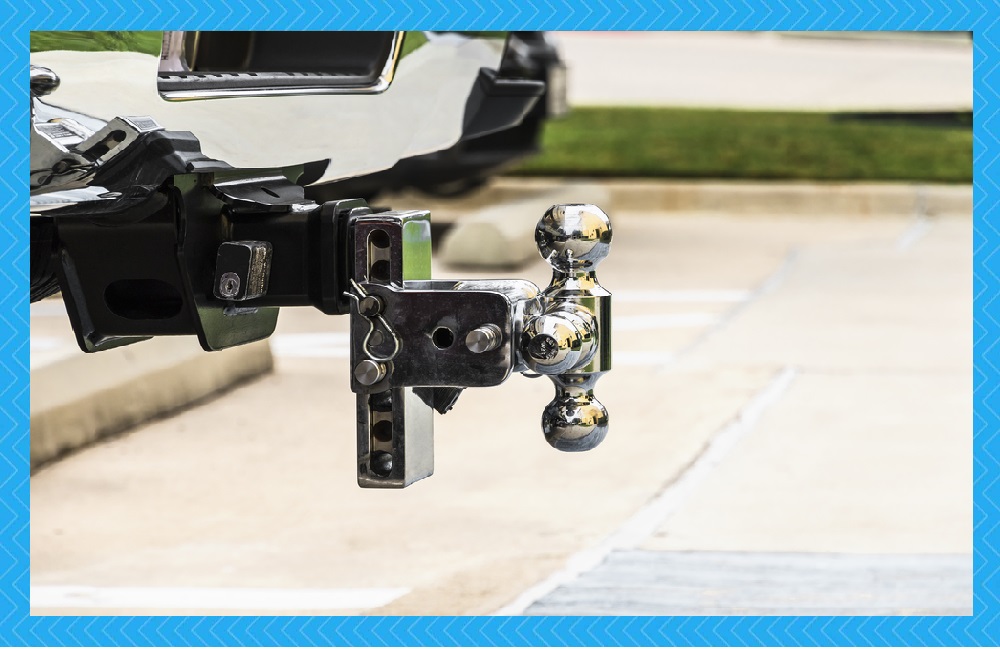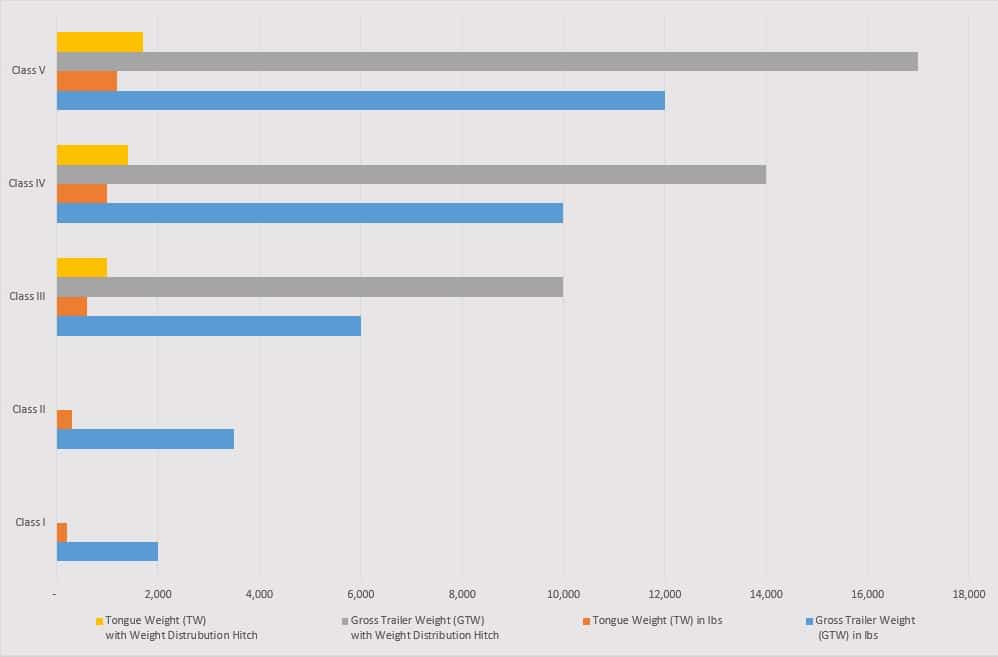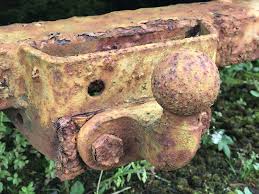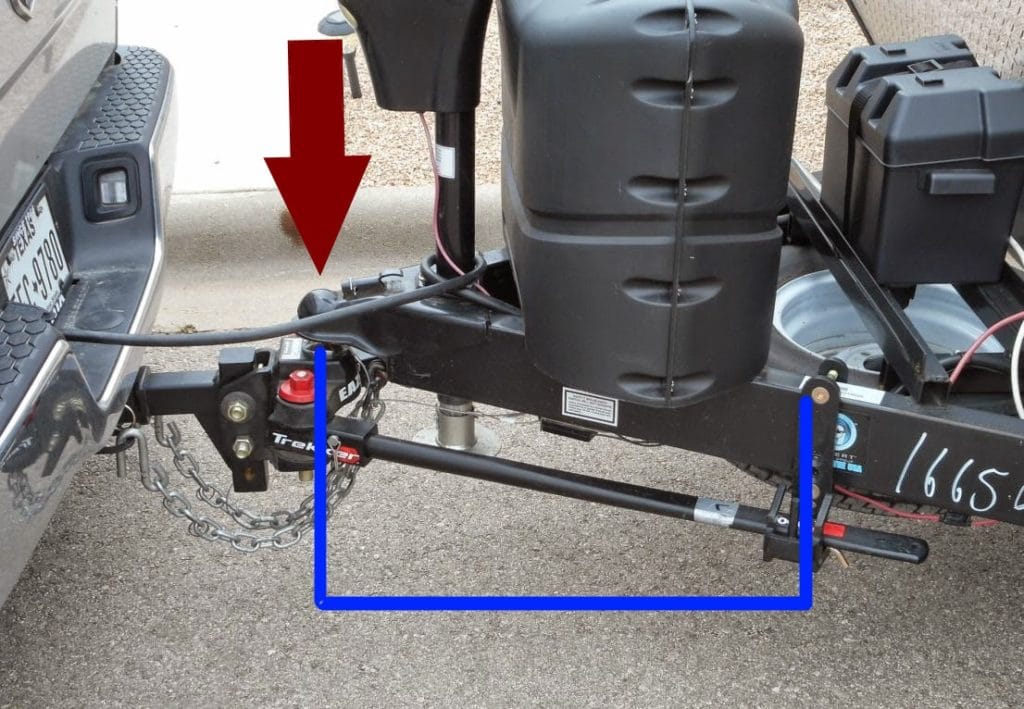
I was shocked to see the number of hitches and classes that exist. Here are some of the hitches and their respected class ranges.
Types of Trailer Hitches
- Front Mount Hitch (Class III)
- Rear Mount Hitch (Class I – V)
- Bumper Hitch (Class I – II)
- Weight Distribution Hitch (Class III – V)
- Pintle Hitch (Class V+)
- Fixed Tongue Hitch
- Gooseneck Hitch
- 5th Wheel Hitch
The higher the class, the more towing capability. The class ranges listed above do not mean a class III hitch can’t be used like a Class I hitch. The classes are based on sales research. For instance, I was only able to find the front mount hitch in class III in online stores. A Gooseneck and 5th wheel hitches do not fall in any classes.
Before covering the types of trailer hitches, I first want to include the class specifications. Below is a graph showing the classes and their towing ability.

Gross Trailer Weight (GTW) is the total combined weight of the trailer and the contents in it. Keep in mind that if you have your Freshwater or grey water tanks filled this can add a good bit of weight to the trailer.
You may also see (GVWR) which stands for Gross Vehicle Weight Rating. This rating means the vehicle itself, persons in it, fuel, and gear. Usually, because the axles/frame of the vehicle can only hold so much.
Gross Combined Vehicle Weight Rating (GCVWR) is the weight of everything vehicle and trailer. All the gear in the trailer or vehicle or any liquid in any tanks.
TIP: use the calculation below to ballpark if you’re safely towing. If the value X is positive, then your vehicle could possibly tow more, if it is negative then your towing more than your vehicle can handle.
GCVWR – GVWR – GTW = X
If you don’t know how much your vehicle can tow, check the papers you signed when buying the vehicle. If you can’t find them visit the dealership you bought it from, call them. When I bought my Jeep, I signed a paper acknowledging that I can only tow a maximum of 2,000 lbs.
Now that you understand the basics of towing classes we can talk about the types of trailer hitches.
Front mount hitch
A front mount hitch is precisely that, it mounts in the front of your vehicle. While it can’t support as much weight as a rear hitch, it can be useful for many things. With a front mount hitch, you could install a snowplow or a ladder rack/canoe carrier extension.
A few of my few applications of this have been a generator platform or bike rack. You’re also able to put a hitch ball on the front to efficiently guide smaller trailers into a garage or difficult spot.
Front mount hitches only seem to only come in Class III (based if my research). While it is a class III hitch, it doesn’t mean the tongue weight is the same as a rear-mounted hitch. Before putting a trailer on the front-mounted hitch make sure you have referred to your vehicle’s manual.
Rear Mounted Hitch
A rear-mounted hitch is the most common and universal hitch type there is. Sometimes referred to as a box hitch or tube hitch. Even small and motorcycles are able to get a class I hitch on the back of them. The square opening on them can range from a small 1 inch to 2-inch opening. Rear-mounted hitches are most common for towing trailers or small cargo decks.
You’re able to remove the hitch ball and platform when not being used. This allows you to use anything that is hit mountable and there a ton of accessories. I’ve seen mountable hitch grills, hammock stands, and even toilets.
Bumper Hitch

The bumper hitch is the smallest when it comes to the types of trailer hitches you’d see. Bumper hitches are common on older smaller trucks like a Ford Ranger. But, harder to come across now in newer vehicles. The hitch ball will almost always block the license plate area.
Bumper hitches aren’t able to tow very much because they are attached to the bumper itself. So wither it be a plastic or metal bumper it is not as strong as a hitch that connects to the frame of a vehicle. Because of this, they aren’t able to tow very much, with a max tongue weight of 100 lbs. And a max towing capacity of 1,000 – 2,000 pounds. You’ll wish you had a mounted hitch.
Weight Distribution Hitch
Definitely a weird-looking hitch but has many benefits. They mount in a standard 2 in. Hitch opening for a Class III rating or placed on a gooseneck or 5th wheel hitches. The primary purpose of them is to, well, distribute weight. Having a lot of pressure on one single point can cause damage over time and make towing more difficult.
I always thought the 2 rods were sticking off of the hitch were to help matching it up to the hitch easier. turns out, those 2 rods are actually called “spring rods,” and they spread out the force pushing down on the hitch. So instead of all the weight being placed on one point (Red Arrow), it is spread all long from the hitch to the end of the spring rods (Blue Lines).

That little extra surface area the weight is distributed over can make a big difference. That’s why the highest numbers above (graph) are for weight distribution hitches. You will notice a significant change when driving with one, hitting bumps and turning will be much smoother.
Pintel Hitch
You won’t see this one around the campground to often but none the less, it is a type of trailer hitch. Most commonly seen on dump trucks, construction, or other large commercial trucks. You won’t see the receiving circlet on any travel trailer unless they are a double-wide mobile home or similar.
Pintel hitches are loud, you’d hear every turn and bump if you towed with this. On the flip side of looking odd, being loud, and only available on larger vehicles it can haul a lot. Upwards toward 65,000 lbs.
Fixed Tongue Hitch
Another uncommon hitch in today’s towing industry. A fixed tongue hitch is precisely that, it’s fixed and can’t be moved out of the way unless uninstalled completely. Similar to a bumper hitch it usually comes with your car or truck and can carry about the same weight of a bumper hitch. The fixed tongue hitch will stick out further than the bumper hitch and have an opening for the small hitch ball.
Gooseneck Hitch

A solid hitch with the highest towing capacity. Mainly found in the commercial towing industry for its strength and versatility. This hitch has a rougher ride, and all bumps are transferred from vehicle to trailer and vice versa. The Hitch sits in the back of the truck bed directly above the rear axle. When installed it looks like a slightly larger hitch ball in the middle of a truck bed. With a turnover ball, you can stow away your hitch into the assembly itself. So you’re always ready to tow without sacrificing any truck bed space.
5th wheel hitch
This is my personal choice because it’s easy to drive with, it’s quiet and easy to operate or backup. This type of trailer hitch is the most common in the residential and camping industry for larger campers. Placed in the same spot as a gooseneck trailer, directly above the rear axle. Your trailer is held in place by one solid piece of metal called the “kingpin”. They offer a smoother and quieter ride as compared to a gooseneck. The hitch assembly can come in a variety of options to suit your needs
- Slide Bar – slightly louder but moves with the road and absorbs some of the bumps. Least expensive
- Double Jaw – Middle of the road between Slide bar and Single jaw options.
- Single Jaw – Since the kingpin is held by one jaw, it is more secure and has a better fit. Best ride quality and the quietest.
Gooseneck vs 5th Wheel Hitch
5th wheel and gooseneck hitches both have an adapter that lets you tow trailers with the different male end of a trailer hitch. Backing up with either of the hitches are easy because the wheelbases (distant between the hitch and trailer axle) is further than a rear-mounted hitch. This makes backing up easier because smaller turns won’t make your trailer jackknife.
Placing the hitch in an out of the top bed can be a hassle sometimes because of the weight. The hitch assembly takes up a lot more truck bed space than the gooseneck hitch.
Then it comes to towing its crazy how many different types of trailer hitches there are to choose from. Regardless of what hitch type you use. Be safe when towing and refer to your vehicle’s manual to make sure you are not hauling more than you should be.

